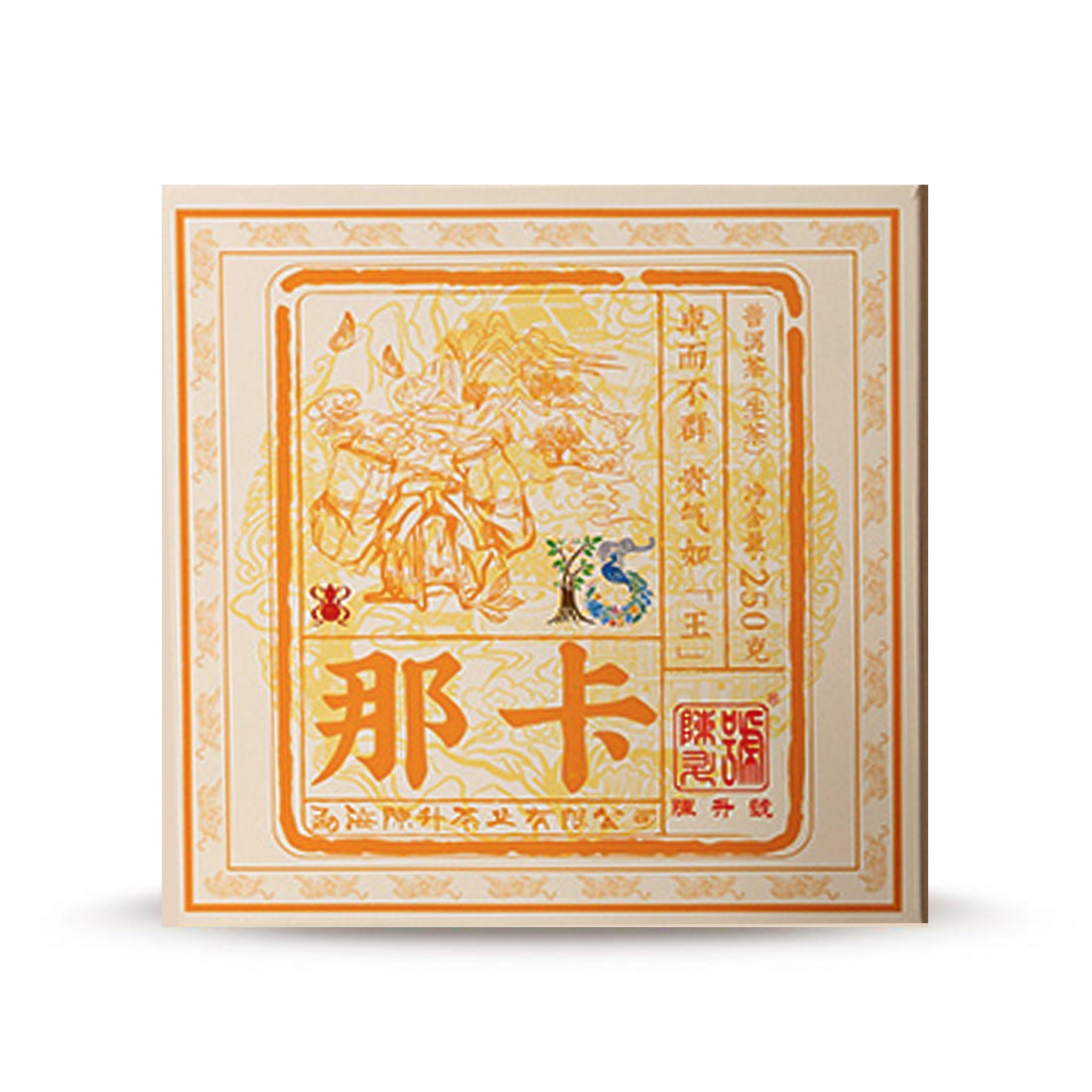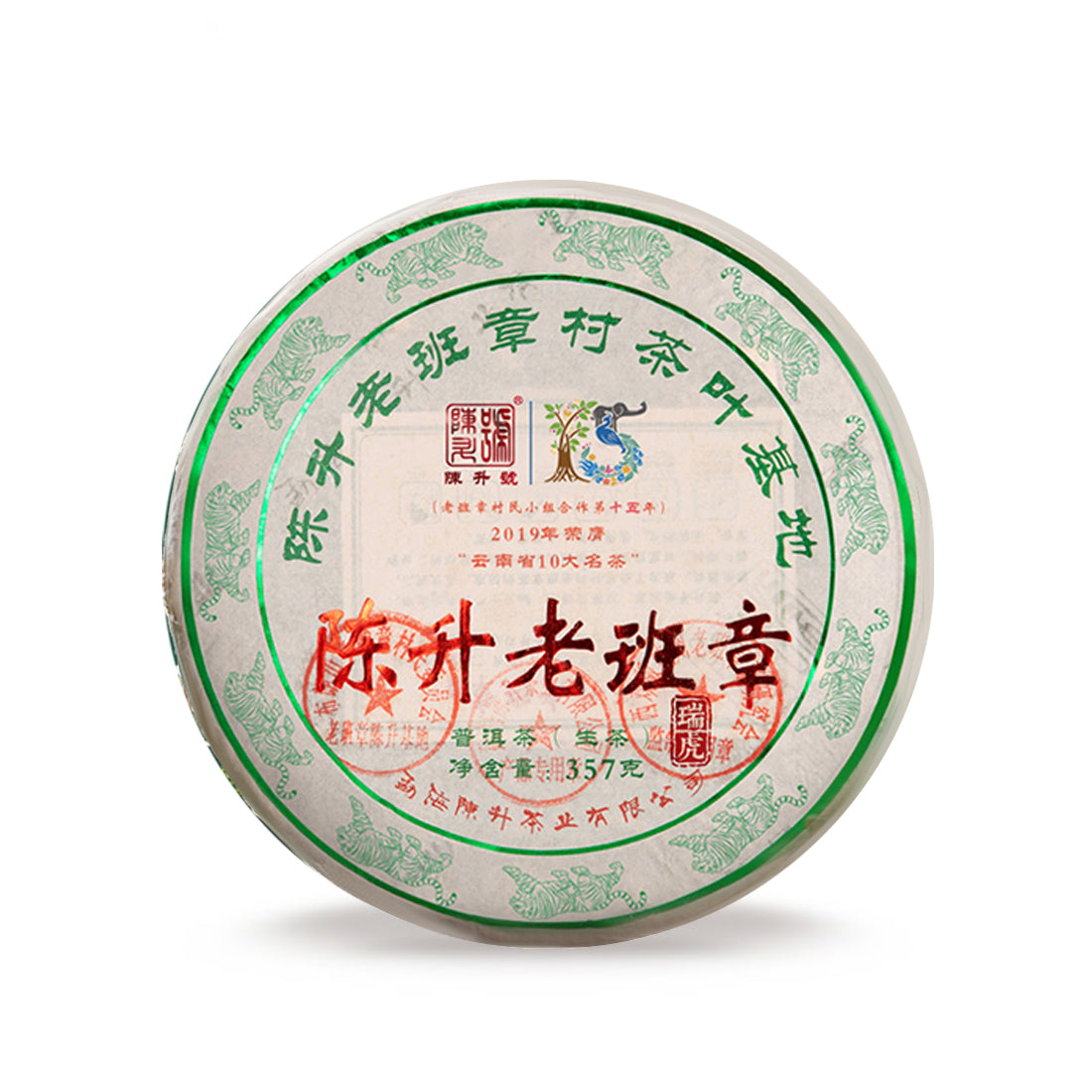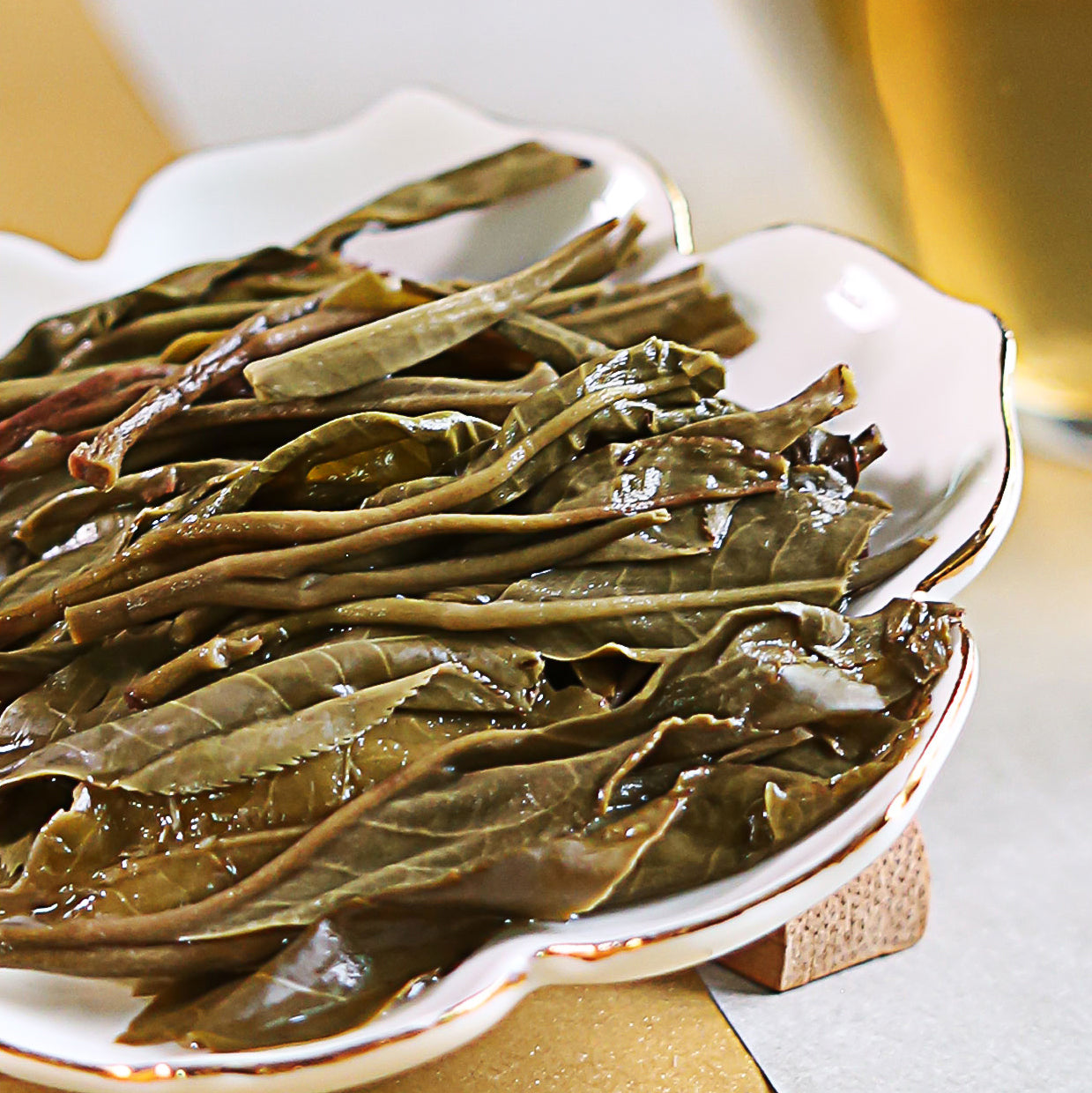How Much Caffeine in Earl Grey Tea: Content and Comparison
When you pour yourself a cup of Earl Grey tea, you're typically ingesting about 40-120 milligrams of caffeine per 8-ounce serving. This amount can vary due to factors such as the brand of tea, the amount of tea used, and the steeping time.
Factors Influencing Caffeine Levels:
- Type of Earl Grey: Some variations use stronger black teas as the base, leading to higher caffeine content.
- Steeping Time: A longer steep typically results in more caffeine being extracted into your cup.
- Tea Leaf Cut: Finer-cut tea leaves have more surface area exposed to water, often increasing the caffeine level.
Here's a quick breakdown of average caffeine content based on steeping time:
| Steeping Time | Estimated Caffeine Content |
|---|---|
| 1 minute | 20-40 mg |
| 3 minutes | 35-70 mg |
| 5 minutes | 40-120 mg |
Remember that decaffeinated versions are available if you're sensitive to caffeine. Even decaffeinated Earl Grey tea can contain up to 5-10 milligrams of caffeine per serving, so it's not completely caffeine-free.
To manage your caffeine intake, consider starting with a shorter steeping time and observe your body's response before adjusting. Also, consult the packaging of your specific brand, as they may provide more precise caffeine information for their product.
Differences Between Earl Grey and Other Teas
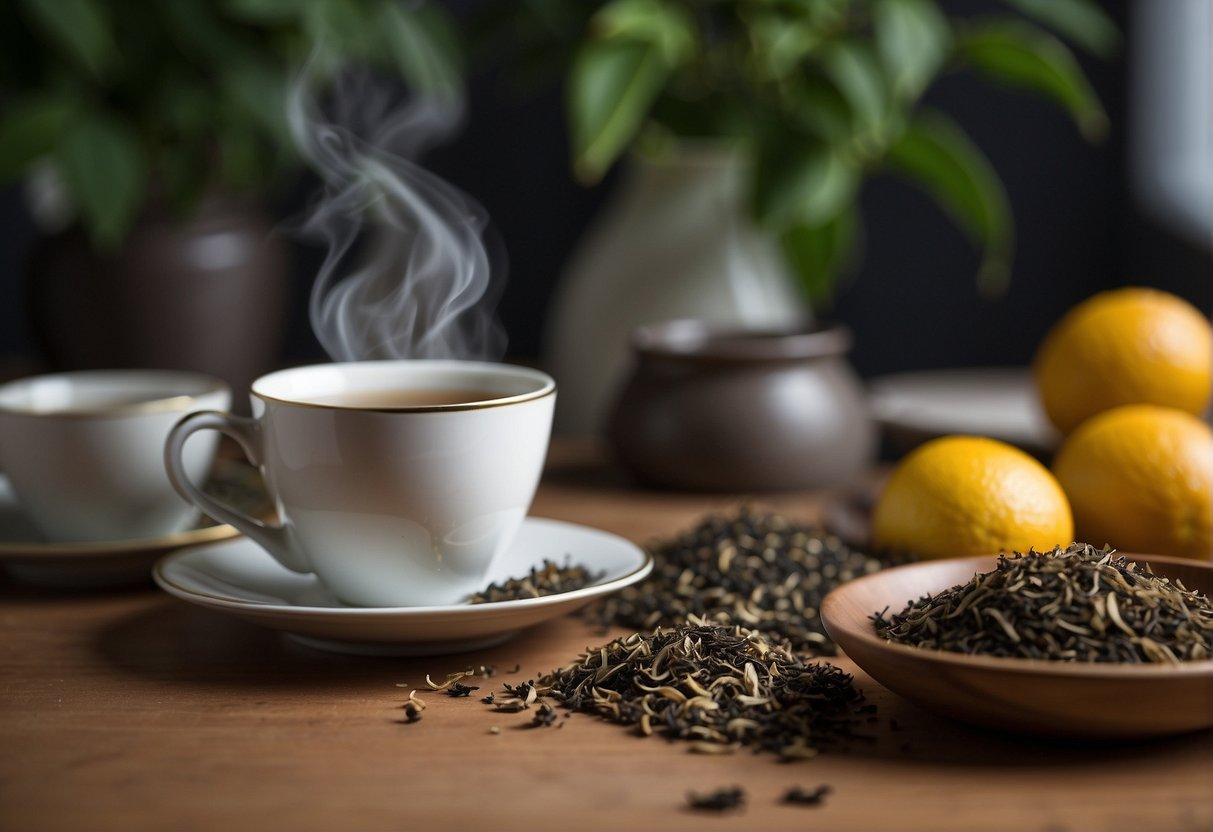
Earl Grey tea possesses distinctive characteristics that set it apart from other teas, primarily due to its black tea base and the addition of bergamot oil.
Black Tea Base Variations
The base of Earl Grey tea is black tea, which comes in various types such as Assam, Ceylon, or Darjeeling. Each imparts a unique flavor profile:
- Assam: Malty and robust.
- Ceylon: Citrusy and full-bodied.
- Darjeeling: Floral and muscatel.
The caffeine content in Earl Grey ranges from 40 to 120 milligrams per 8 oz. serving. This variation depends on the specific black tea leaves used as the base.
Bergamot Oil Influence
Bergamot, a citrus fruit, is the signature note of Earl Grey. The oil extracted from its rind is what gives Earl Grey its distinctive taste:
- Presence of Bergamot: Typically 2-5% of the blend.
- Impact on Caffeine: Negligible, the flavoring does not alter the basic caffeine content provided by the black tea base.
Your Earl Grey's caffeine level is influenced by the black tea used in its creation, while the bergamot oil solely contributes to its signature citrus flavor.
Factors Influencing Caffeine Levels
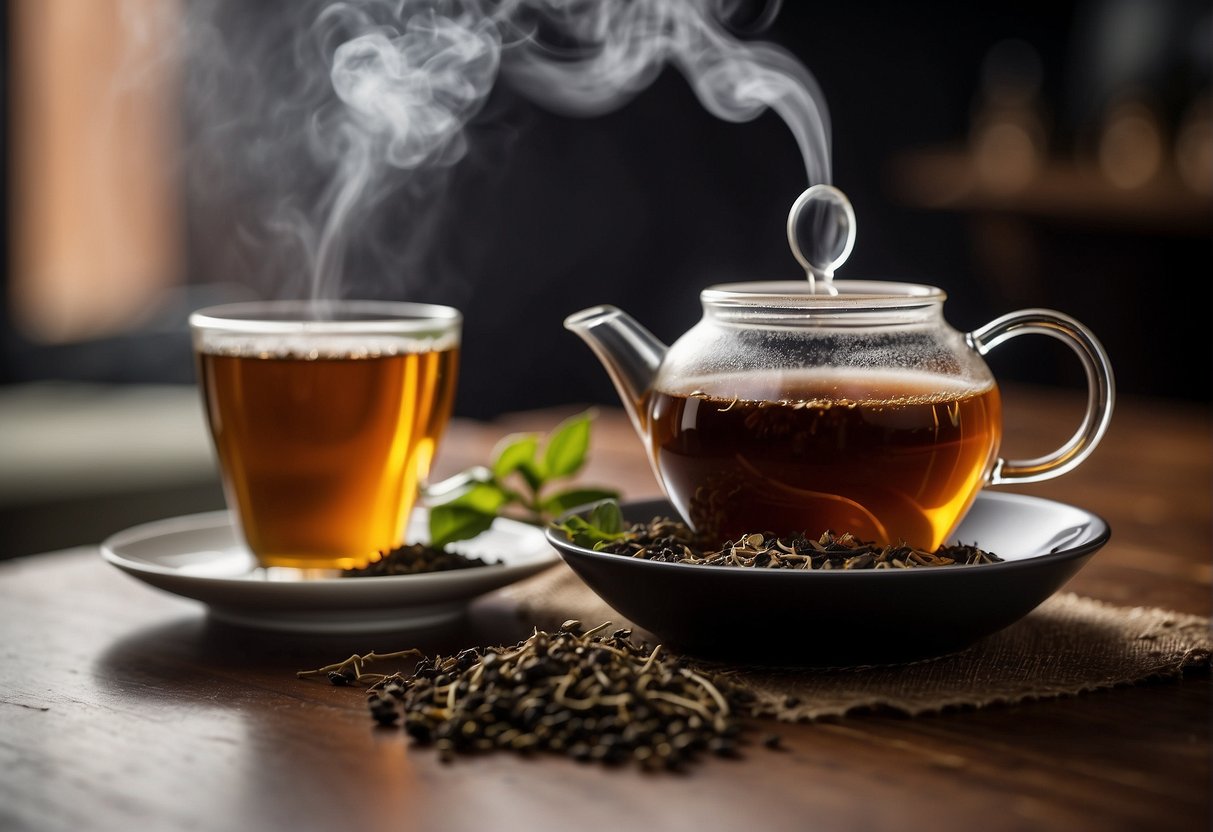
Your cup of Earl Grey tea can vary in caffeine content due to several factors. The level can change depending on how long you brew the tea, the amount of tea leaves used, and the temperature of the water.
Brewing Time
- Shorter brewing time: Less caffeine is extracted.
- Longer brewing time: More caffeine is extracted.
To manage caffeine intake, you should adjust the brewing time. A standard brewing time for Earl Grey tea is about 3-5 minutes.
Tea Leaf Quantity
- More leaves: Higher caffeine content.
- Fewer leaves: Lower caffeine content.
The quantity of tea leaves used can significantly influence caffeine levels. For a standard 8 oz cup, using one teaspoon of loose Earl Grey tea leaves is typical.
Water Temperature
- Higher temperature: Extracts caffeine more efficiently.
- Lower temperature: Results in less caffeine.
The ideal water temperature for Earl Grey tea is around 208°F (98°C), which effectively extracts caffeine. Deviating from this temperature can decrease the caffeine extracted from the tea leaves.
Health Implications of Caffeine in Tea
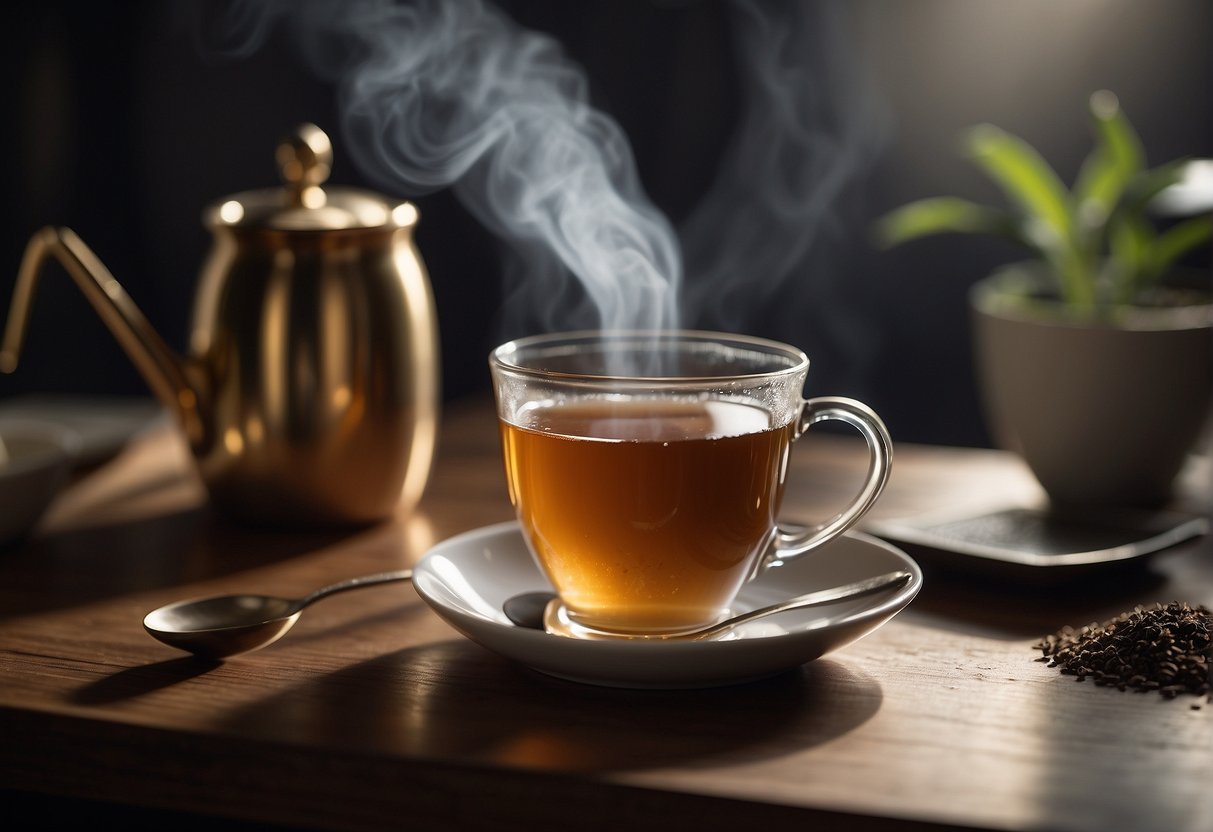
Caffeine in Earl Grey tea can have both beneficial and adverse effects on your health, depending on the amount you consume.
Benefits of Moderate Consumption
- Improved Mental Alertness: You might experience increased focus and alertness due to the mild stimulant effect of caffeine.
- Enhanced Metabolic Rate: Moderate caffeine intake can boost your metabolism and may aid in weight management.
Potential Risks of Excessive Intake
- Sleep Disruption: Consuming large amounts of caffeine can interfere with your sleep patterns, potentially leading to insomnia.
- Increased Heart Rate: High intake can cause a rapid heartbeat, which may be concerning, especially if you have heart conditions.
Comparison with Other Sources of Caffeine
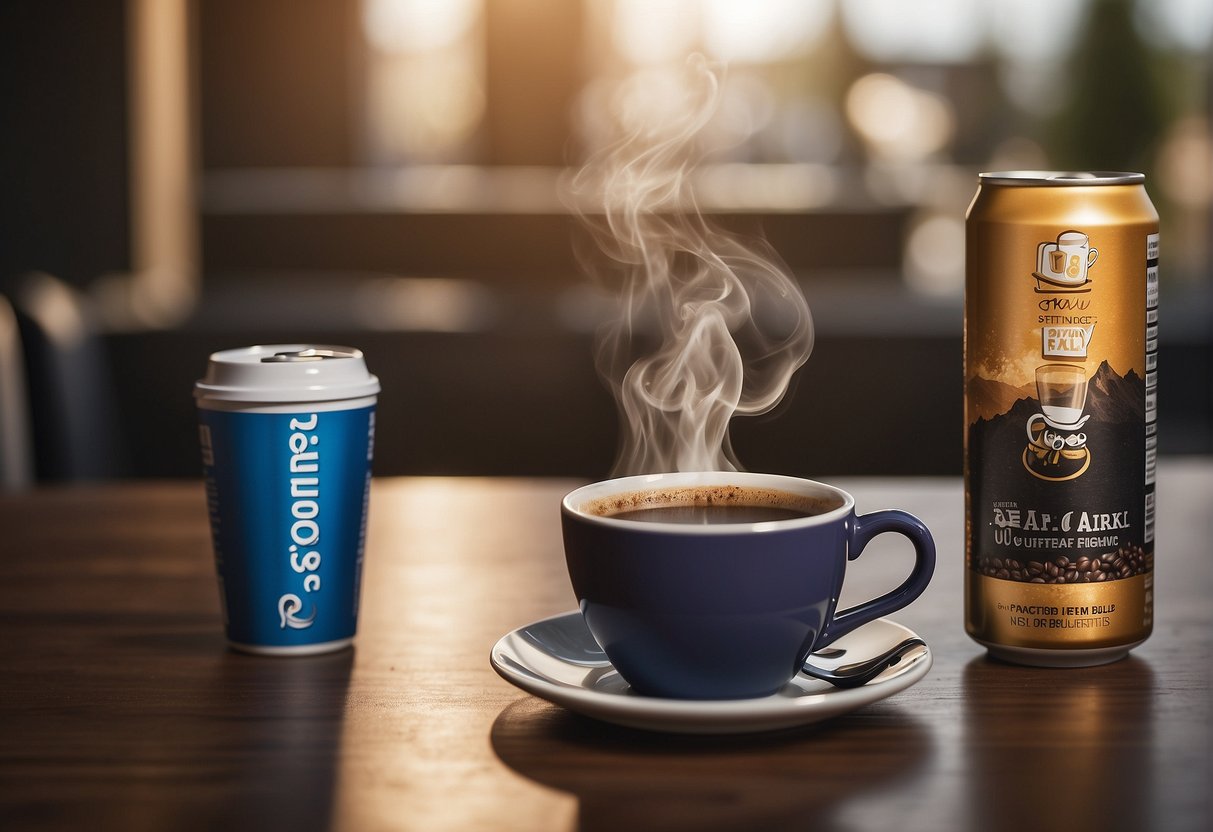
When comparing the caffeine content in Earl Grey tea to other sources, you'll notice distinct differences in concentration and serving sizes.
Coffee Vs. Tea
Caffeine in Earl Grey Tea: On average, a typical 8 oz cup of Earl Grey tea contains about 55-90 mg of caffeine.
Caffeine in Coffee: In contrast, an 8 oz cup of coffee generally boasts a higher level of caffeine, ranging from 95-200 mg depending on the type and strength of the brew.
It is clear that coffee tends to have a higher caffeine content than Earl Grey tea for the same serving size.
Soft Drinks and Energy Drinks
- Soft Drinks: A typical 12 oz can of cola contains roughly 35-45 mg of caffeine, making it a less potent source than Earl Grey tea per ounce.
- Energy Drinks: Conversely, energy drinks can vary widely but typically hold a much higher caffeine content, sometimes as high as 250 mg per 8 oz serving.
While soft drinks often have less caffeine than Earl Grey tea, energy drinks can contain significantly more.
Decaffeinated Earl Grey Tea Options
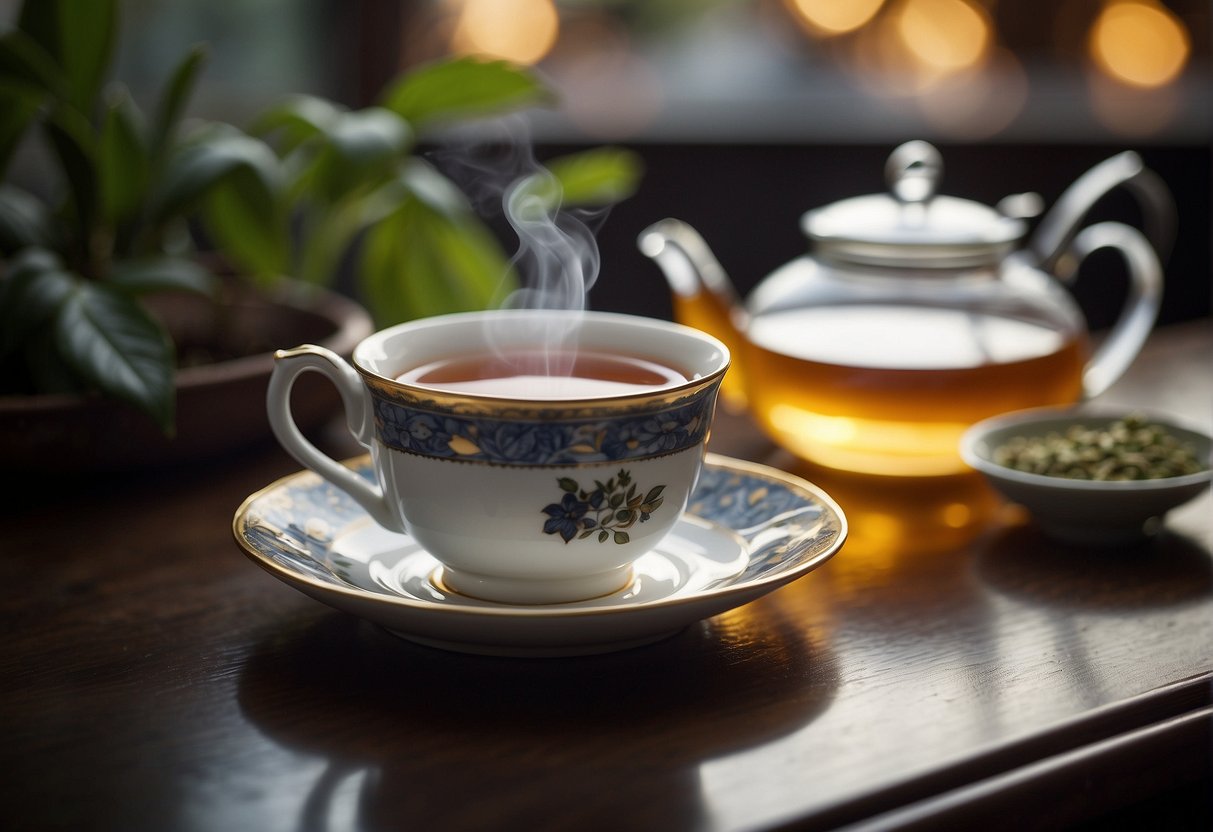
If you're looking to enjoy the classic flavor of Earl Grey tea without the caffeine, there are several decaffeinated options available. Decaf Earl Grey retains the tea's distinctive taste, which comes from the oil of bergamot, but undergoes a process to remove most of the caffeine.
When choosing a decaffeinated Earl Grey, you'll encounter two main decaffeination methods:
- Chemical Solvent Process: Often utilizes ethyl acetate or methylene chloride to remove caffeine.
- CO2 Process: Uses pressurized carbon dioxide, which is considered a more natural approach.
Decaffeinated Earl Grey Brands:
| Brand | Decaffeination Method | Notes |
|---|---|---|
| Twinings | CO2 Process | Widely available and well-reviewed. |
| Stash Tea | CO2 Process | Known for their environmentally friendly packaging. |
| Bigelow | Chemical Solvent | Offers a variety with lemon added. |
| Harney & Sons | CO2 Process | Premium tea that is higher priced. |
| Republic of Tea | Chemical Solvent | Has a distinct citrus flavor. |
Remember, while decaf teas are lower in caffeine, they're not completely caffeine-free. Typically, decaffeinated Earl Grey contains about 2-10 milligrams of caffeine per cup, whereas regular Earl Grey can contain 40-120 milligrams.
When making your purchase, consider the decaffeination method that aligns with your preferences, and check if the brand discloses the caffeine content. This way, you can confidently enjoy your decaffeinated Earl Grey tea at any time of day.
Measuring Caffeine Content
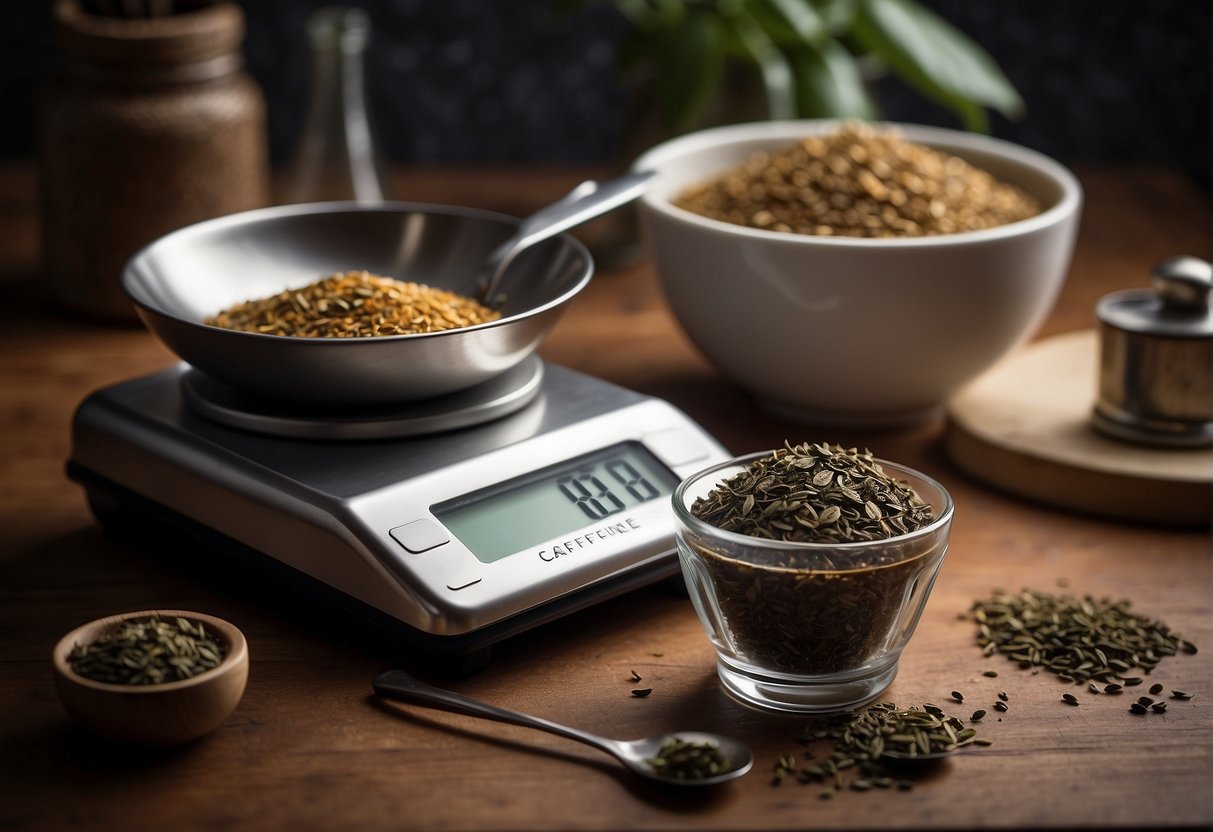
To understand the caffeine content in Earl Grey tea, it is essential to consider the two primary methods used: Lab Testing and Estimation Methods.
Lab Testing
When you want an accurate measurement of caffeine in Earl Grey tea, lab testing is the most reliable method. Professionals use specialized equipment like High-Performance Liquid Chromatography (HPLC) to isolate and quantify caffeine content. Results from lab testing are definitive and typically expressed in milligrams per serving.
Estimation Methods
For a quick estimation without lab resources, you can use existing data and mathematical models. These methods consider factors such as the type of tea leaf, steep time, and water temperature. The following table presents an estimated range of caffeine content you might expect in a typical 8-ounce (240-milliliter) serving of Earl Grey tea:
| Steep Time (Minutes) | Estimated Caffeine Content (mg) |
|---|---|
| 1 | 14-29 |
| 3 | 20-40 |
| 5 | 25-48 |
Remember, these values are approximations and can vary based on the specific tea blend and brewing method.
Caffeine Regulation and Labeling

When you purchase Earl Grey tea or any other caffeinated product, it's important to understand the regulatory framework that governs caffeine labeling. In the United States, the Food and Drug Administration (FDA) oversees the labeling of food and drinks, including those with caffeine.
- FDA Guidelines: The FDA requires that manufacturers clearly indicate the presence of caffeine in products if they have added it as a separate ingredient.
- Natural Caffeine: However, for products like Earl Grey tea, where caffeine occurs naturally, there is no mandatory requirement to list caffeine content on the packaging.
- Voluntary Disclosure: Despite the lack of requirements, some companies opt to voluntarily provide caffeine content information for transparency and consumer knowledge.
To better gauge the amount of caffeine in your Earl Grey tea, consider these industry practices:
| Caffeine Source | Labeling Practice |
|---|---|
| Added Caffeine | Must be listed on the label |
| Natural Caffeine | Labeling is voluntary |
Note: Certain consumer advocacy groups are pushing for more stringent labeling requirements to ensure that individuals can make informed decisions based on the caffeine content of their consumables.
Remember, while caffeine content in Earl Grey can vary, an average cup usually contains approximately 20-60mg of caffeine. If precise caffeine content isn't listed, and you're sensitive to caffeine or monitoring your intake, you might need to consult the manufacturer or refer to general guidelines for tea caffeine content.
Frequently Asked Questions
In this section, you'll find concise answers to common queries regarding the caffeine content in Earl Grey tea.
What is the caffeine content difference between Earl Grey tea and coffee?
Earl Grey tea generally contains less caffeine than coffee. While an average cup of coffee has about 95 mg of caffeine, a cup of Earl Grey tea typically has around 40 mg.
Does decaffeinated Earl Grey tea contain any caffeine?
Decaffeinated Earl Grey tea may still contain a small amount of caffeine, usually about 2-5 mg per cup.
What is the typical caffeine amount in one cup of Earl Grey tea?
A typical 8-ounce (237 ml) cup of Earl Grey tea contains approximately 40 mg of caffeine.
Can drinking Earl Grey tea have any side effects or benefits?
Consuming Earl Grey tea can offer benefits such as antioxidants and improved digestion. However, sensitive individuals may experience side effects like jitteriness or sleep disruption due to its caffeine content.
Which type of tea generally has the highest amount of caffeine?
Out of all the tea types, black tea, which includes Earl Grey, generally has the highest caffeine content. However, matcha, a type of powdered green tea, often has more caffeine per serving.
Is it recommended to drink Earl Grey tea in the evening?
If you are sensitive to caffeine, it's best to avoid drinking Earl Grey tea in the evening to prevent potential sleep disturbances.
← Older post Newer post →



